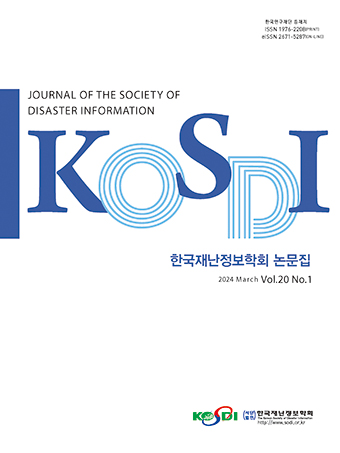Research Article
Abstract
References
Information
Purpose: The purpose of this study is to develop a system that enables quick on-site response using real-time decision-making by sharing the results of measurement and management performed in the field for safe temporary construction. Method: It is possible to take preemptive responses during construction by identifying the safety factors of construction conditions from measurement results and determining the risk factors such as soil properties and variability of climate change that can occur during construction by simultaneously using the back analysis method reflected in the measurement system and structural review. Result: we developed a back analysis algorithm of the SUNEX program to cope with the discrepancies between the design results and measured results due to inconsistency between site conditions and design properties, unexpected loads, and outdoor environment. The process of matching the measurement result with the analysis result can be confirmed in the safety management system. Conclusion: Gateway was used to communicate with real-time measurement results and safety management system program. It was made possible to preemptively respond to risk factors that may occur in the field.
연구목적: 본 연구에서는 안전한 가시설 공사를 위해서 현장에서 수행하고 있는 계측관리 결과를 현장관리자와 구조검토자가 공유하여 실시간 의사결정을 이용한 빠른 현장대처가 가능한 시스템을 개발하고자 한다. 연구방법: 계측시스템과 가시설 구조검토시 반영하는 역해석 기법을 동시에 이용하여 계측결과로부터 시공상태의 안전성을 파악하고 공사중 발생할 수 있는 위험요인을 판단하여 시공중 선제적 대응할 수 있는 가시설 공사중 지반물성치 및 기후변화의 이변성에 대응하는 시스템을 도입하였다. 연구결과: 현장여건과 설계 물성치의 불일치 및 예상치 못한 하중 및 외기환경으로 설계에서 예측한 설계결과와 계측결과의 차이 발생에 대처할 수 있는 SUNEX 프로그램의 역해석 알고리즘을 개발하고 계측결과와 해석결과가 일치하는 과정을 확인하는 안전관리시스템을 개발하였다. 결론: 실시간 계측결과 값을 수집하여 외부서버 및 안전관리 시스템 프로그램과 통신할 수 있는 게이트웨이를 제작하여 개발한 안전관리 시스템에서 실시간으로 해석결과 값과 비교가 가능하도록 하여 현장에서 발생할 수 있는 위험요인에 대한 선제적 대응이 가능하도록 하였다.
- Jang, C.S. Kim, S.S. (2002). "Application of genetic Algorithm to the Back Analysis of the Underground Excavation System." Journal of the Korean Geotechnical Society, Vol. 2002, pp. 109-128.
- Kim, G.-S. (2008). A Study on the Displacement Analysis of Surrounding Ground in Earth Retaning Excavation. Master. Dissertation, Chosun University, Korea.
- Kim, Y.-J., Lee, Y.-J. (2013). "Development of a Back Analysis Program for Reasonable Derivation of Tunnel Design Parameters." Journal of the Korean Tunnelling and Underground Space Association, Vol. 15, No. 3, pp. 357-373.10.9711/KTAJ.2013.15.3.357
- Lee, K., Lee, S., Yoon, H. (2006). "A Verification for Determination of Soil Properties Using Field Measurement and Back Analysis." Journal of the Korean Geo-Environmental Society, Vol. 7, No. 5, pp. 5-11.
- Lee, M.-H. (2016). Effect of Berm on the Displacement Behavior of Temporary Earth Retaining Wall During Excavation. Ph.D. Dissertation, Korea Maritime & Ocean University, Korea.
- Park, H.-J. (2014). "A Study on the Displacement Prediction Method using the Inverse Analysis Algorithm." Journal of The Korea Institute of Information and Communication Engineering, Vol. 18, No. 4, pp. 920-926.10.6109/jkiice.2014.18.4.920
- Park, K.-H. (2014). Estimation of Horizontal Subgrade Reaction Modulus for Earth Retaining Wall. Ph.D. Dissertation, University of Seoul. Korea.
- Terzaghi, K., Peck, R.B. (1967). Soil Mechanics in Engineering Practice. John Wiley and Sons, New York, US.
- Publisher :The Korean Society of Disaster Information
- Publisher(Ko) :한국재난정보학회
- Journal Title :Journal of the Society of Disaster Information
- Journal Title(Ko) :한국재난정보학회논문집
- Volume : 15
- No :4
- Pages :570-577
- DOI :https://doi.org/10.15683/kosdi.2019.12.31.570




 Journal of the Society of Disaster Information
Journal of the Society of Disaster Information







